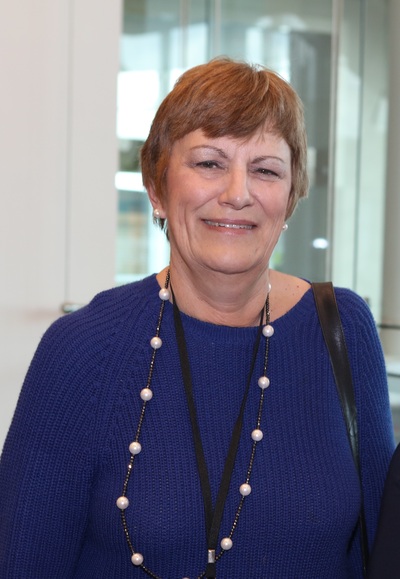Where to from here? A sustainable path for day hospitals

The effects of day hospital underfunding are being felt across health care. To understand current challenges and chart a sustainable path forward, Hospital + Healthcare speaks with Jane Griffiths, CEO of peak body Day Hospitals Australia.
Day procedures, like colonoscopies, are commonly performed in traditional ‘overnight’ hospitals, but moving them into day hospitals could save the healthcare sector millions, according to an analysis by Day Hospitals Australia.
The analysis reveals how flaws in the current healthcare funding model overcompensate traditional hospitals for day procedures; at the same time, under-incentivising day hospitals who can do them more cost-effectively.
The data
In the realm of gastroenterology, overnight hospitals are paid 93% more than day hospitals, yet account for 73% of procedures. Moving diagnostics alone into day hospitals would save insurers $182 million annually, says Day Hospitals Australia CEO Jane Griffiths.
“Essentially this data shows us that the day hospital sector is probably underpaid a little, but that the overnight sector is paid far too much for these procedures,” she said.
“And this is just one example. Now try and comprehend the financial impact across the full breadth of gastroenterology procedures — not just diagnostics — and other specialities, too.
“It’s an eye-watering amount of unnecessary expenditure; even so, the same-day trend prevents overnight hospitals from cross-subsidising other, more complex procedures.”
Indeed, the report showed equally concerning findings in the realm of chemotherapy, where the indexation for day hospitals has risen 11% since 2014, compared with 32% for the overnight sector. If all chemotherapy were to be carried out in day hospitals, the sector would save $35.7 million annually.
Across the top 20 diagnostic-related groups, the same shift would save $0.5 billion dollars.
A broken system
At the heart of this issue, Griffiths says there are misconceptions on what a day procedure is, which stops funding from being channelled appropriately.
“A procedure is classed as day stay if it can be done in less than 24 hours,” she said. “But we are seeing confusion around this across the public and private sector.
“Some falsely assume that if a patient is admitted at 9 am and discharged at 1 am, it is as an overnight stay.
“A procedure of this length is always day stay, according to the international definition, and hence is appropriate for care in a day hospital,” she clarified.
Even with an agreed definition, Griffiths highlights that day hospitals tend to have weak bargaining power in their negotiations with insurers.
She says large corporate hospitals are in the front seat, with “most of the pool going to them” and day hospitals “picking up the pieces”.
Not helping matters, day hospitals are under-represented on government forums and often go unheard in policy discussion, she said.
“The CEO Forum that the Minister [the Hon Mark Butler MP] set up, after his private hospital financial health check last year, doesn’t have any peak bodies, like mine, on it,” Griffiths said.
“It has actual CEOs from hospitals; but unfortunately, only one day hospital representative on it. And that representative is great. But he comes from a large corporate day hospital group.”
The result is lack of incentives, with existing funding mechanisms often failing to cover basic costs for procedures like colonoscopies.
“Reimbursement doesn’t cover the cost of running the day hospital. So, when you see the overnights being paid so much more, it’s soul-destroying,” Griffiths said.
With private facilities still hurting from COVID, existing funding constraints mean an uncertain future for day hospitals.
“If it wasn’t for [former] Minister Hunt’s viability agreement, a lot of hospitals — large and small — would have disappeared. We’ve already lost 23 day hospitals in the last two years — and 11 of those have been gastro units, which is alarming,” she said.
**************************************************
Patients prefer day hospitals
Funding aside, Griffiths says day hospitals are often a preferred choice for patients.
“Patients in day hospitals are happy with their experience. They like the hospital size, with a non-threatening environment, easy access and limited time required in hospital.
“Their procedures have been refined to such a degree that they can be discharged home relatively quickly after their procedures.”
**************************************************
What’s the solution?
Griffiths says shifting all day procedures into the day hospital sector at once would harm overnight hospitals, but that a gradual shift — like the US experience — could work.
“The US did exactly that. They transferred ophthalmology and gastro first and then just gradually started introducing other specialties into the ambulatory surgery centres.”
To facilitate the shift, she recommends the introduction of a ‘Type D’ category that would mean a same-day procedure must be done in a standalone day hospital.
This would add to the current classification system, in which Type A requires treatment in an overnight hospital, Type B is day case venue not stipulated and Type C is treated out of hospital unless certified for hospital treatments.
Given the benefits, she said this would represent a win for patients and the private hospital sector.
“It would generate significant savings and free up funds for complex procedures in overnight hospitals,” she concluded.

Some patients wait 6 years to see a public hospital specialist. Here's how to fix this
Australian research spanning more than a decade suggests there are ways to reduce waiting lists...
Reusing medical equipment is good for the planet. But is it safe?
A new study tested replacing just one kind of item — single-use absorbent pads, known...
Stewardship and sustainability: environmentally minded medical products
Australia's health sector produces twice as much carbon emissions as aviation. But with...

![[New Zealand] Transform from Security Awareness to a Security Culture: A Vital Shift for SMB Healthcare — Webinar](https://d1v1e13ebw3o15.cloudfront.net/data/89856/wfmedia_thumb/..jpg)
![[Australia] Transform from Security Awareness to a Security Culture: A Vital Shift for SMB Healthcare — Webinar](https://d1v1e13ebw3o15.cloudfront.net/data/89855/wfmedia_thumb/..jpg)




